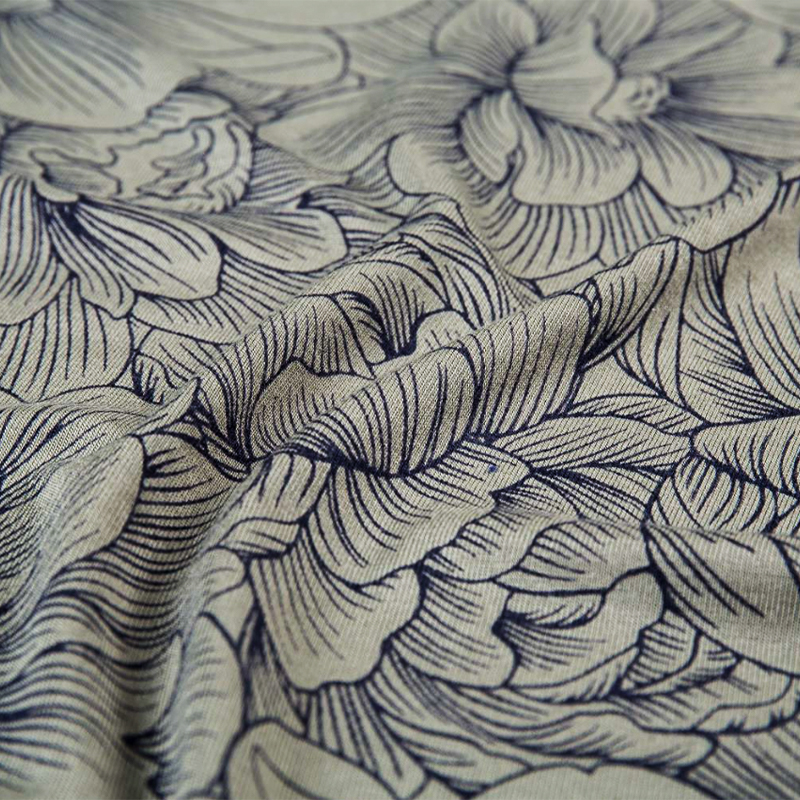Jersey fabric, especially those made from natural fibers like cotton, is known for its breathability and moisture-wicking properties. However, its performance can vary depending on the specific composition and construction of the fabric. Here’s a detailed comparison of jersey fabric’s breathability and moisture-wicking properties with other common fabrics:
Breathability
Jersey Fabric
Natural Fibers (e.g., Cotton):
High Breathability: Cotton jersey fabric is highly breathable, allowing air to circulate freely through the fabric. This helps regulate body temperature and keep the skin cool and dry.
Comfort: The breathability of cotton jersey makes it ideal for everyday wear and casual clothing, especially in warmer climates.
Synthetic Blends (e.g., Polyester):
Moderate Breathability: Synthetic blends, such as cotton-polyester jersey, offer moderate breathability. While not as breathable as pure cotton, they still allow some air circulation.
Durability: These blends often provide better durability and resistance to wear and tear compared to pure cotton.
Other Fabrics
Cotton:
High Breathability: Pure cotton is highly breathable and absorbs moisture well, making it comfortable for everyday wear.
Versatility: Cotton is widely used in various types of clothing due to its comfort and breathability.
Linen:
Very High Breathability: Linen is one of the most breathable fabrics available. It is highly absorbent and dries quickly, making it ideal for hot and humid climates.
Texture: Linen has a unique texture that can be less smooth than cotton but offers superior breathability.
Wool:
Moderate to High Breathability: Wool is naturally breathable and can regulate body temperature effectively. It is often used in winter clothing due to its insulating properties.
Moisture Absorption: Wool can absorb a significant amount of moisture without feeling wet, making it comfortable for active wear.
Silk:
High Breathability: Silk is a luxurious fabric that is highly breathable and thermoregulating. It is often used in high-end clothing due to its comfort and elegance.
Moisture Absorption: Silk can absorb moisture and release it quickly, keeping the skin dry and comfortable.

Moisture-Wicking Properties
Jersey Fabric
Natural Fibers (e.g., Cotton):
Good Moisture Absorption: Cotton jersey clothing fabric is good at absorbing moisture, which helps keep the skin dry.
Drying Speed: While cotton absorbs moisture well, it dries relatively slowly compared to synthetic fabrics.
Synthetic Blends (e.g., Polyester):
Improved Moisture-Wicking: Synthetic blends, especially those with polyester, offer better moisture-wicking properties than pure cotton. They can quickly move moisture away from the skin and dry faster.
Performance: These blends are often used in activewear due to their enhanced moisture management and quick-drying capabilities.
Other Fabrics
Polyester:
Excellent Moisture-Wicking: Polyester is highly effective at wicking moisture away from the skin and drying quickly. It is commonly used in activewear and sportswear.
Durability: Polyester is also durable and resistant to wear and tear, making it suitable for high-intensity activities.
Nylon:
Good Moisture-Wicking: Nylon is another synthetic fabric that wicks moisture well and dries quickly. It is often used in outdoor and athletic clothing.
Durability: Nylon is strong and abrasion-resistant, making it suitable for rugged activities.
Spandex (Elastane):
Moderate Moisture-Wicking: Spandex is primarily used for its stretch and recovery properties, but it also offers some moisture-wicking capabilities. It is often blended with other fabrics to enhance performance.
Flexibility: Spandex provides excellent stretch and recovery, making it ideal for form-fitting garments.
Merino Wool:
Natural Moisture-Wicking: Merino wool is a high-quality wool that wicks moisture effectively and dries quickly. It is often used in performance clothing and outdoor gear.
Odor Resistance: Merino wool also has natural odor-resistant properties, making it suitable for extended wear.






.png?imageView2/2/format/jp2)
.jpg?imageView2/2/format/jp2)
_.jpg?imageView2/2/format/jp2)


